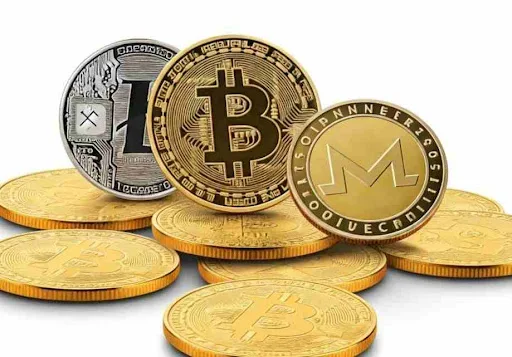Cartesi: Revolutionizing Blockchain Scalability with Off-Chain Computing
Blockchain technology has grown tremendously over the past decade, offering revolutionary solutions to global problems. However, scalability, high transaction fees, and limitations in programming capabilities remain major obstacles. Cartesi, a Layer 2 blockchain solution, aims to solve these challenges by integrating off-chain computing with decentralized technologies. By allowing developers to leverage mainstream software and computing tools, Cartesi opens a new frontier for blockchain applications.
In this article, we’ll explore the core features, use cases, and potential of Cartesi, as well as its relevance in the growing blockchain ecosystem.
What is Cartesi?
Cartesi is a Layer 2 blockchain platform that bridges the gap between blockchain technology and traditional software development. It enables developers to use off-chain computation to build decentralized applications (dApps) without sacrificing blockchain security or decentralization.
The unique aspect of Cartesi is its ability to execute complex computations off-chain using Linux-based virtual machines (VMs). This innovation empowers developers to create dApps using traditional programming languages like Python, C++, and others, rather than being restricted to blockchain-specific languages such as Solidity.
Key Features of Cartesi
1. Off-Chain Computation
Cartesi allows developers to offload heavy computations from the blockchain to a Linux-based virtual machine. This process significantly reduces costs, improves scalability, and enhances the efficiency of decentralized applications.
2. Decentralization and Security
While computations occur off-chain, Cartesi maintains decentralization and security through cryptographic guarantees. The outcomes of off-chain computations are verifiable on the blockchain, ensuring trust.
3. Support for Mainstream Software
Developers can use widely adopted software stacks, libraries, and tools to build dApps. This compatibility reduces the learning curve and expands the pool of potential blockchain developers.
4. Lower Costs
By handling resource-intensive computations off-chain, Cartesi minimizes on-chain activity, leading to significantly reduced transaction fees.
5. Flexibility
Cartesi supports multiple blockchains, making it a blockchain-agnostic solution. This feature ensures interoperability and compatibility across diverse ecosystems.
The Technology Behind Cartesi
Cartesi’s infrastructure is built on two main pillars:
1. Cartesi Virtual Machine (CVM)
The Cartesi Virtual Machine is a Linux-based environment where developers can execute off-chain computations. It offers flexibility and efficiency while maintaining blockchain-level security through cryptographic proofs.
2. Descartes SDK
The Descartes Software Development Kit (SDK) provides developers with tools to build scalable dApps on the Cartesi platform. The SDK simplifies the development process by allowing integration with familiar programming environments.
The Role of the CTSI Token
CTSI is the native utility token of the Cartesi ecosystem, playing a critical role in its functionality:
1. Transaction Fees: CTSI is used to pay for computational tasks on the network.
2. Staking: Users can stake CTSI tokens to participate in network operations and earn rewards.
3. Governance: Token holders can influence decisions about network upgrades and proposals.
Use Cases of Cartesi
Cartesi's versatility opens up a wide range of applications across various industries. Here are some prominent use cases:
1. DeFi Applications
Cartesi enhances DeFi by enabling complex financial computations off-chain. This capability ensures faster processing times and reduces gas fees, making DeFi more accessible.
2. Gaming
Blockchain-based games can benefit from Cartesi’s ability to handle complex game mechanics and heavy computations off-chain. Developers can create rich, interactive gaming experiences without compromising performance.
3. Machine Learning
Cartesi’s Linux-based environment supports machine learning models and algorithms, allowing developers to integrate AI and blockchain technologies seamlessly.
4. Healthcare
Cartesi can facilitate secure data sharing and off-chain processing for healthcare applications, such as medical research and patient management systems.
5. Supply Chain Management
By enabling off-chain computation, Cartesi can process large datasets and enhance transparency, traceability, and efficiency in supply chain operations.
How Cartesi Solves Blockchain Challenges
1. Scalability
Traditional blockchains struggle with limited throughput, resulting in slower transaction speeds and higher costs. Cartesi’s off-chain computation model alleviates these problems by offloading resource-intensive tasks, freeing up blockchain bandwidth.
2. Developer Accessibility
Blockchain development is often hindered by specialized programming languages and tools. Cartesi eliminates these barriers by allowing developers to use mainstream programming languages and tools they are already familiar with.
3. High Costs
Cartesi significantly reduces transaction costs by minimizing on-chain computation. This feature is particularly beneficial for applications requiring complex data processing.
4. Interoperability
Cartesi supports multiple blockchain networks, enabling seamless integration and collaboration across ecosystems.
Cartesi Ecosystem
The Cartesi ecosystem is rapidly expanding, with ongoing development and partnerships across various sectors:
1. Cartesi dApps: A growing number of dApps are being built on Cartesi, leveraging its unique computational capabilities.
2. Partnerships: Cartesi collaborates with blockchain projects, enterprises, and research institutions to drive adoption and innovation.
3. Developer Community: Cartesi actively supports its developer community through grants, hackathons, and educational resources.
Competitors and Market Position
Cartesi operates in the competitive Layer 2 and blockchain scaling space, alongside projects like Polygon, Optimism, and Arbitrum. However, Cartesi’s unique focus on off-chain computation and support for mainstream programming languages sets it apart.
Advantages of Cartesi
1. Developer-Friendly: By supporting mainstream programming tools, Cartesi makes blockchain development accessible to a wider audience.
2. Scalability: Off-chain computation reduces congestion and improves efficiency.
3. Cost Savings: Low gas fees make Cartesi an economical choice for developers and users.
4. Interoperability: Compatibility with multiple blockchains enhances its versatility.
5. Security: Off-chain computations are cryptographically secured and verifiable on the blockchain.
Challenges
Despite its promising potential, Cartesi faces certain challenges:
1. Adoption: Competing with established Layer 2 solutions requires strong marketing and partnerships.
2. Complexity: Developers unfamiliar with Linux-based environments may face a learning curve.
3. Regulatory Risks: As with all blockchain projects, Cartesi is subject to regulatory scrutiny, which could impact its growth.
Future of Cartesi
Cartesi’s roadmap highlights its commitment to growth and innovation. Key initiatives include:
1. Ecosystem Expansion: Onboarding more developers, dApps, and enterprises.
2. Technical Enhancements: Improving the Cartesi Virtual Machine and SDK.
3. Community Engagement: Supporting the developer community through education and incentives.
Conclusion
Cartesi is a groundbreaking Layer 2 solution that bridges the gap between blockchain technology and traditional software development. By enabling off-chain computation and supporting mainstream programming tools, Cartesi addresses the key challenges of scalability, cost, and accessibility in the blockchain ecosystem.
With its innovative approach, growing ecosystem, and strong focus on developer experience, Cartesi is poised to become a key player in the blockchain space. Whether you're a developer, investor, or blockchain enthusiast, Cartesi represents an exciting opportunity to explore the future of decentralized computing.







Comments
Post a Comment